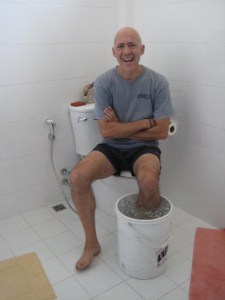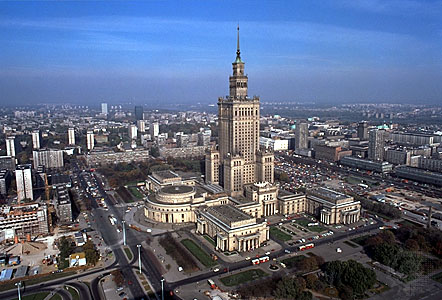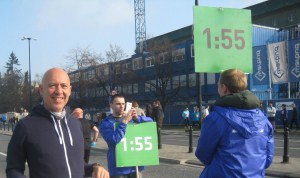Sixteen minutes may not seem like a huge amount of time to you. But for me, the last six years of my life have been dominated by an obsession to make a specific sixteen minute period vanish from my memory. Or at the very least, re-write that part of my personal history. If this sounds strange to you, rest assured I will explain myself fully. But before I do, let me give you a bit of a back-story to put these statements into a meaningful context.
Fifteen years ago, when I lived in the UK and ran my own company, my dreams contained a particular vision. My thinking (back then) was that if and when my business was financially stable and could operate without me being around all the time, I would spend a few months each year travelling and doing voluntary work or fundraising in parts of the world where help was most needed. Fortunately, that vision materialised for me and ultimately led to the creation my Calling All Angels Foundation in 2009.
There have been several fundraising programmes since then, with the most recent campaign (launched on 1st February 2015) created to support the “Schools of Hope” on the Thai/Burmese border. Declaring my intention to take part in and complete the Warsaw Marathon enabled me to ask people who felt a connection to these kids to sponsor my noble effort so that we could collectively raise $10,000. It was intended that this money would be used to help build a badly needed new school for a few hundred Burmese refugee kids who would otherwise face being overlooked by the rest of the world and be forced into a world of hardship and poverty.
Above: The Schools of Hope community. When I met these incredible people in January, I knew I had to get involved. My heartfelt thanks goes out to those of you who supported the Hope is in Your Hands project. If anyone else would like to make a donation, there is a button at the bottom of the page. The school supports Burmese children that have refugee status in Thailand when they arrive and helps them meet their needs for food, warmth, shelter and education so that they can eventually integrate into Thai society
Below: These five boys have all grown up with the school and are now well on their way towards leading the kind of life they could only have dreamed of a few years earlier. They will all graduate from senior school this year and go on to further education or into the workplace (left). Work will soon be underway to build a new school, on land on the outskirts of Chiangmai, donated by friends of the school (right)
You may be one of the many kind people who gave your personal support and donated to the campaign. If you are, and even if you are not, you may be pleased to know that together, we raised a grand total of $13,225! This was way more than I had expected and the achievement engendered a deeply felt sense of gratitude towards everyone I came into contact with during the three hectic months of the campaign. So you will not be too surprised to hear that I feel very happy about this outcome and have fully satisfied my need (for now) to make such a contribution to others.
Above: Screenshot from the “Schools of Hope Campaign” website showing the final amount raised – a staggering $13,225 – which was way in excess of the campaign target. If you missed the chance to donate and would like to contribute, there is a button at the bottom of the page
Below: To raise awareness of the campaign, I arranged three interviews on Polish Radio stations in the weeks leading up to the marathon. In total, the broadcasts reached over 2 million people. It was the first time I have been interviewed on national radio and it was a great learning experience. In total, well over 200 people from all over the world made donations as you can see in the chart (right). This money will help change people’s lives and I am very grateful to everyone who has given their generous support
Like all good stories, there is always more than one side to it, and this one is no exception. And this is where the sixteen minutes you see in the title comes into play. Before I reveal their significance to you, there is something else you might need to know. You see, I hate to admit this, but running marathons is not just something I do as a foundation for fundraising programmes to support others. Whilst that certainly is a legitimate and worthwhile reason for doing it, and without doubt what motivated me to enter my first marathon, back in 2009, it is not the only one.
There is another lesser known, more selfish reason that I choose to run marathons which is a huge motivating force for me. And that is to challenge myself physically and experience my body moving fast, freely and close to the limits of what I am truly capable of. Having said that, I am definitely not fast enough to be an out-and-out sprinter. I am much better suited to running long distances. So back in 2009, to keep myself motivated for the first time through 24 weeks of training, I decided to set a personal goal – not just to complete my first marathon, which would be quite admirable – but to run it as fast as I could. The question was, just how fast would be an appropriate challenge for a man in his fifties in his first race?
To answer that question, I did some research. To begin with, I established that in the USA, about 0.5% of the population has run a marathon and it appears to be similar in other countries. And according to research in The Guardian, the worldwide average finishing time for men is 4 hours 13 minutes. Of these, researchers estimate that around 20% of finishers would be in their fifties or older. Finally, looking at the percentage of finishers who completed the marathon distance in under four hours, it turns out to be around 24.2%, across all age groups. So a picture emerged. I could see that running a sub four-hour marathon would place me in the top quartile of marathon runners out there and an even smaller group of people my own age. Finishing in under four hours became a really satisfying and worthwhile goal and I made the commitment to myself to do it! Jokingly, I referred to this ambition as my “Tim Ferriss” moment, in honour of the man who wrote the extremely popular book “The 4-Hour Workweek: Escape 9-5, Live Anywhere, and Join the New Rich” in 2007.
My first attempt at reaching this goal was in New York in 2009. The run raised $15,275 for my Calling All Angels Foundation, which was an outstanding achievement in itself. But a calf injury five weeks before the race had impacted my chances of realising my personal goal and I finished in four hours and sixteen minutes. Whilst that time is quite acceptable, being close to the global average, I felt disappointed with myself as under the right conditions I knew I could do better. Close friends tried to re-assure me, saying “You were only sixteen minutes over – you still did really well” and I ought to have been able to accept that. But I couldn’t let it go – I knew I would have to try again so that I could be free of regret later.
Above: Despite raising over $15,000 for the Namaste Children’s House Orphanage in Nepal (left) and the Elephant Nature Park in Thailand (right) by running the New York marathon (centre), I fell short of reaching my personal goal by sixteen minutes and knew I couldn’t let it rest
My second attempt did not come until 2012, in Phuket (Thailand). It was an outright disaster for me and I finished in over five hours. My training had not gone well and I was experiencing serious fatiguing in my legs during all of my long runs. Feeling very dejected, I took a break from the whole marathon training regime to let my body recover. During that period, I continued to run half-marathons to maintain my fitness and worked on improving my speed as much as I could.
My third attempt came in April 2014, after I secured a place in the ballot to run in the London Marathon. Every good story has a twist in it and one was about to occur for me that I could never have expected. Feeling very excited by the possibility of running a sub four-hour time in my home town, I prepared a fourteen week training plan to get myself ready. I was in great shape and had recently run a half-marathon in 1 hour 52 minutes so things were looking good. But once again, a calf muscle injury picked up on my first day of training (in a short easy run), immediately halted my plans and seemed to put a premature end to that dream being realised.
This is where serendipity kicked in. We often don’t know the meaning of events as they unfold and can choose to trust that whatever is happening, whether we like it or not, is for a good reason. Focusing my efforts on restoring my calf muscle, I enrolled the support of my good friend Jia in Chiangmai who had medical experience, and who knew about acupuncture. He applied several treatments that were intended to help speed up my recovery and after seven weeks, I was able train again. At this point, having missed out on around 50% of my training plan, I was seriously considering dropping out as I was not sure that I could reach the level of fitness required to run a sub four-hour time. Yet it is really hard to get a place in the London marathon and I didn’t want to let go of it unless it was absolutely necessary. Seeing my disappointment and frustration, Jia said he knew a running coach back in Colorado where he was from, and would ask her if she might help me with advice about the best way to train with only seven weeks to go. Although I was sceptical that this would help me, I agreed and he made contact.
Her name is Lorraine Moller. Without realising it, Jia had connected me with a former Olympian, who won a bronze medal in the marathon at the 1992 Olympic Games in Barcelona at the age of 37. She was also a three-time winner (1986,87,89) of the Osaka International Ladies Marathon. She offered to re-design my training plan to reflect the reduced amount of time I had. Her training methods were quite different to those I had been using and in my arrogance, I even questioned some of her instructions when I first saw them! Nevertheless, having put my trust in her guidance and despite my injury, I went to London and ran a personal best time of four hours and seven minutes – still agonisingly short of my goal but now I could see I was definitely on the right track (no pun intended!). My deficit of sixteen minutes was now reduced by nine, leaving just seven more minutes to be taken care of in the next race.
At this point, let me ask you a question. Can you think of an occasion in life when something you badly wanted did not happen, only to discover later that it was very fortunate for you that it didn’t? In hindsight, this is what happened for me in getting injured before the race in London. Two priceless gifts emerged from that chain of events. One was the connection with Lorraine, which meant I now had vital knowledge about how to train effectively without getting injured. If I could apply her training programme over a complete cycle, I believed (for the first time) that I would be able to finally nail it. The second gift was that it led me to discover and run for “Schools of Hope“, which was not even in my thoughts until the start of 2015. Had I beat my time in London, I would probably not have even been thinking of running another marathon! Life works in mysterious ways and it made sure that my dogged pursuit of those sixteen minutes would not only change my world, but would also change the world for the hundreds of Burmese refugee kids that will attend the school in years to come.
Above: My calf muscle injury seemed like the end of the world when it happened in my first day of training for the London marathon (left). Yet it was just what I needed as it connected me with Lorraine Moller (centre) who became my coach. I didn’t realise it at the time, but later discovered that she was one of the greatest female marathon runners of her time and I am very lucky to have received her guidance. It enabled me to run a personal best in London of 4:07 and reduce my sixteen minute deficit by nine (right)
And that is what brought me to Warsaw, for my fourth attempt. Once again, following Lorraine’s guidance and training programme, I made steady progress over the winter, running an average of 35-40 miles per week for 20 weeks, notching up a total of around 700 miles, including hills, sprints and eleven half-marathons. Four weeks before the marathon, to calibrate my training and check my capability for another sub four-hour attempt, I entered the Warsaw half-marathon on March 29th. Looking for a time of around one hour and 55 minutes as confirmation, I crossed the line in a blistering one hour 48 minutes – a new personal best. Clearly, I was ready and with four weeks to go, started my tapering to make sure that I would be fully rested for the marathon.
Above: Warsaw was the chosen venue for my fourth attempt. It is a beautiful city (left) with lots of green spaces. I ran 3-4 times per week in the huge and picturesque Royal Lazienki Park, which was pretty cold in December (centre, right)
Below: Needing to finish the half-marathon in one hour and 55 minutes, I decided to run with the pacers (left). After a couple of miles, that pace felt too slow for me and I went off on my own, finishing in a personal best time of one hour and 48 minutes (right). I felt delighted as it was indicating to me that I was ready (once again) to have a shot at a fast marathon and banish the remaining seven minutes once and for all
Knowing I was definitely fit enough and fast enough, the only thing left to choose was my strategy for the race. For those of you that know something about running long distances, I decided to go for a ‘negative split‘ strategy. In a big race, with around 10,000 people or more, everyone’s natural reaction is to go out too fast at the start and it takes a lot of self-restraint to allow others to run ahead of you and not be pulled along with them. To run a negative split, you complete the first half slower and have to run the second half faster. Provided you are fueled properly, this works well because your body gets more comfortable as the race progresses and starts to speed up naturally. It sounds great in theory, but I had never done this before, preferring an even pace in my previous three marathons. Once Lorraine had explained the reasoning to me, I was totally convinced this was the right way to go. Starting slow would also allow me to compensate for the lactic acid that is produced as a by-product of exerting oneself. The further and faster you go, the more lactic acid builds up in your legs yet you can delay this to some degree if you start slower.
In case you didn’t know, a marathon is 26.2 miles (42 kilometres) long. Experienced runners will tell you that the marathon really starts when you reach twenty miles (32 kilometres) and I can verify this from my own experience. At this point, I was well beyond any distance I had run in my training and starting to get tired. But with around an hour to go, the thought of finishing and never having to do this all again was somehow comforting and although I dropped my pace just a little, I had plenty of time in hand from running slightly faster in the middle of the race. With two miles to go, my legs were getting heavier by the minute, and every stride felt like I was dragging a shopping bag full of bricks behind me. “Keep going, you can do this. You have worked for six years for this. It is yours for the taking. This is your moment” is what I kept saying to myself. Crossing the Świętokrzyski bridge in the final mile, I could see the Polish National Stadium in the distance, where the race began and ended. Seeing that finishing line in the distance and summoning one final burst of energy, I smiled inside and out as I jubilantly crossed it, with a time of 3:56:39!
Above: The Polish National Stadium is where the Warsaw Marathon begins and ends
Below: It took me six years to finally run my sub four-hour marathon, but when I think about how many people in the world have been touched by my Calling All Angels Foundation, as well as the personal growth and satisfaction I have experienced by committing to this goal, it has been worth every single minute, hour, day and week of training
Many people have asked me if I am going to run another marathon. Now that I have had some time to recover and reflect on this, I would like to run one or two more, although they will definitely be for fun and I will be taking them very easy. From a training perspective, the time commitment is huge for full marathons, so I will most likely content myself with racing in half-marathons for now. But if I get another chance to run in London, Berlin or any of the world major races, I may just be swayed by the temptation!
For those of you that are interested, I am writing about my four-hour marathon challenge and a whole bunch of other events and personal experiences that have changed or enriched my life during the last ten years in a book called “Life Without A Tie”. In case you don’t know me, in November 2005, I sold my business, my home and all of my possessions and left myself with just a bag of clothes and a laptop. With a desire to explore and discover new parts of the world, I was hoping to meet people who would inspire me and become my teachers for the next phase of growth in my life. To make this all possible, some complex financial re-engineering was required to sustain my journey without the level of income I was used to. I had no experience as a budget traveller and at 45 years of age, I may have become one of the oldest back-packers in Asia!
After nearly ten years, it is time to share what I have seen, heard, felt, learned and understood with others. I know it is possible to live in anonymity, without possessions or status, without attachment to goals, without a fixed identity or routine and be as happy (actually, even happier) than I was when I was living more of a “conventional” life in England, pursuing a career, materialism and enjoying a busy social lifestyle. My book will enable me to share these experiences, and the knowledge and insight that came from them, with people who are on a similar journey and who want to know the truth for themselves. If you want to talk to me about it, drop me a line.
Above: Look out for both of these publications!
0oo
PLEASE SUPPORT THE CALLING ALL ANGELS FOUNDATION AND MAKE A DONATION TODAY!
0 Please feel free to copy and share this image and any other Inspiration Cards
Please feel free to copy and share this image and any other Inspiration Cards





























Wonderful inspirational story Ray. Thank you for sharing your journey, with all it’s challenges and blessings! Thank you for giving us all the hope and faith to manifest our ideas and I wish you all the best with your new book “Life Without A Tie”. Oh, by the way, congratulations on achieving yet another one of your dreams! With love from Ibiza
I loved reading this story Ray… your persistence and motivation is inspirational, and to raise that much money for the school is just joyous. The combination is angelic. I love the way you have decided to break the mold of ones expected life, and totally pulled it off. I’m sure your life is incomparably richer for it, as are others that you engage with around the world.
Maree
Tremendous achievement, top quartile. Enthralling journey. I hadn’t put it all together and seen the whole picture till you wrote this. And a gripping piece.